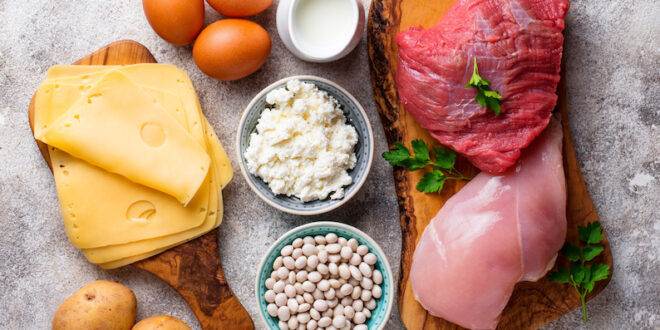So we’re sure you know eating the right foods can help you get the most out of your body and keep you energetic, active and stronger for longer. Whether your goals are to look after the garden, keep up with the grandkids, or run a half marathon, what you put into your body is just as important as what you do with your body. But exactly what are the areas to focus on as an active, older person?
Times Are A Changing
Over the years, we’ve lived through any number of fad diets or food trends – some good, and some bad. It’s one of the reasons why nutrition is so confusing: the goal posts keep changing. But it’s important to remember that like medicine, nutrition science is constantly evolving, so what we thought was right 20 years ago, may not be so today.
On top of this, the physical needs of our body change as we get older – so the diet that served us well in our 30’s or 40’s, may not be suited to our 50’s, 60’s and beyond. Did you know your requirements for certain nutrients like calcium and vitamin D go up as you age? Understanding these changes in your body, and staying on top of the latest research, will help identify new eating habits to help you stay fitter and stronger for longer.
Bone Up on Muscle Research
Most of us have heard of, or understand, how osteoporosis works. Our bone density increases as we grow and develop, but past a certain point, it starts to decrease to the point where our bones can become weakened. What you may not realise is your muscles go through a similar process, but you may not notice until you start to feel the effects. It’s often called ‘feeling our age’ – when we get tired more quickly, have more aches and pains, or struggle to do the same level of physical activity we used to. The good news is there are two things we can do to prevent, or even reverse, this decline: we can eat well, and we can stay active.
Maintain Muscle
Did you know protein makes up around 40% of our body? It has an essential role to play in almost every tissue, so it makes sense that we need a good source of protein in our diet. When it comes to maintaining muscle and staying active, protein is king, because our muscles rely on protein to fuel growth and regeneration.
What’s The Trick?
The key is to choose the right types of protein and have them at the right time to make the most of your intake.
Protein Essentials
Protein is made up of a long chain of smaller building blocks, called amino acids. When we eat protein, our body breaks it down into these amino acids and sends it off around the body to fulfil a variety of functions.
There are over 20 types of amino acids we know of. Different foods contain different types of amino acids and our bodies can actually make most of them itself. The ‘essential’ amino acids are the ones our bodies can’t make, and these have to be sourced from our diet. Only a few foods contain all of these nine essential amino acids.
There are 20 amino acids in protein.
Three of these ‘essential’ amino acids, often called Branch Chain Amino Acids, are particularly important for muscle maintenance. So we not only need to choose proteins that have the nine essential amino acids, we also need to choose those with high concentrations of the three amino acids most important to muscles.
Nine amino acids are essential to source from food.
Foods containing all of the nine essential amino acids are often called ‘complete’ proteins and one of the most readily available sources is dairy foods. Adding dairy protein to your day boosts the availability of branch chain amino acids to help your muscles stay stronger for longer. Generally, proteins derived from animal foods (meats, fish, poultry, cheese, eggs, yoghurt, and milk) are complete and proteins derived from plant foods (legumes, grains, and vegetables) tend to have less of one or more essential amino acid. Some are notably low, such as corn protein, which is low in lysine and tryptophan.

Not Just What, But WHEN
Most of us already eat enough protein in a day to meet the recommended daily intakes, but studies have shown we get the bulk of our protein intake at night with our evening meal. Sound familiar? However, new research indicates as we age, our bodies need more regular intakes of protein to maintain strong muscles.
Think of your body as a parking meter that needs a dose of high quality protein to run for four hours. With full credit, your meter happily ticks away, building and repairing muscles. However, if you want to stay in the ‘zone’ it needs topping up again before the credit expires. So by spreading protein intake throughout the day, we allow our body to make better use of the branch chain amino acids to build and repair our muscles.
Right on Time
So the focus for most of us should be spacing out our intake of high-quality protein throughout the day. The first step for many will be new ways of boosting protein into the earlier part of our day. We should wake up to more protein at breakfast and top up at lunch, dinner and snacks.
By Emma Stirling APD










NanaP23 - 13 years ago
Thanks for this article. I think this is one of the hardest parts around aging, knowing how much of each food category we need. Personally, I think hormonal changes and health issues, operations, adjusting intake and lack of knowledge of changes has the biggest impact and why, like myself, many people gain weight like they never have before. To my mind from what I see staying slim is not all about intake as when I see others that do little exercise but eat plenty, not gaining weight, losing it easily, I believe everyone is so different and have different needs. I think for myself and for many as we get older we suddenly can become sensitive to some foods. Putting this into a package for myself is difficult but it is very expensive to get personalised help.